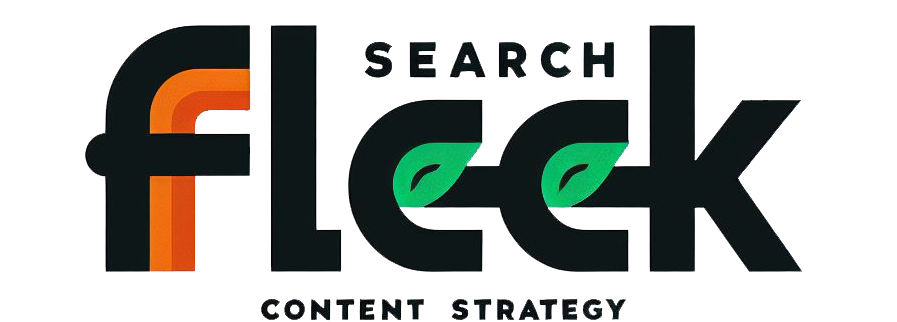In today’s digital age, a strong online presence is crucial for insurance agents. Potential clients are increasingly turning to the internet to research their insurance needs and find the right agent. A well-maintained blog can be a powerful tool for insurance agents to establish themselves as experts, attract leads, and build trust with their audience.
This comprehensive guide will equip you with the knowledge and strategies to create a successful insurance blog and leverage its power to grow your business.
Understanding Your Audience
The foundation of any successful blog lies in understanding your target audience. Who are you trying to reach with your content?
- Identify your niche: Are you specializing in auto insurance, home insurance, life insurance, or business insurance?
- Research their needs: What are the common concerns and pain points of your target audience? What questions do they have about insurance?
- Tailor your content: Use language and topics that resonate with your audience’s specific needs and interests.
For example, if you focus on young professionals, you might create blog posts on topics like “affordable renters insurance options” or “must-have insurance for freelance workers.”
Content Strategy: Planning for Success

A. Blog Niche and Goals
Once you understand your audience, define your blog’s niche within the broader insurance industry. This will help you stay focused and ensure your content remains relevant. Additionally, set clear goals for your blog. Are you aiming to:
- Increase brand awareness and establish yourself as a local insurance expert?
- Generate leads and convert website visitors into potential clients?
- Educate your audience about insurance and different policy options?
Having clear goals will guide your content creation process and help you measure your blog’s success.
B. Content Pillars and Topic Brainstorming
Identify core topics relevant to your niche and target audience. These will serve as your content pillars, and you can then brainstorm specific blog post ideas within each pillar.
Here are some examples of content pillars for an insurance blog focused on homeowners insurance:
- Homeownership Basics:
- “First-time Homebuyer’s Guide to Insurance”
- “Understanding Different Types of Homeowners Insurance”
- Risk Management and Prevention:
- “Simple Home Maintenance Tips to Prevent Claims”
- “Preparing Your Home for Winter to Avoid Damage”
- Claims and Coverage:
- “What to Do After a Homeowner’s Insurance Claim”
- “Common Home Insurance Exclusions You Should Be Aware Of”
C. Content Calendar
Creating a content calendar is essential for consistent blog posting and planning. This calendar will help you schedule your content in advance, ensuring a steady stream of fresh content for your audience. Consider factors like seasonal trends, industry events, and holidays when planning your content calendar.
For example, you might schedule blog posts about winter storm preparedness during the fall months, or write about life insurance options during tax season.
Crafting Compelling and Informative Content
A. Writing for the Web
People browsing the web tend to skim and scan content, so writing for the web requires a specific approach. Here are some key points to remember:
- Clarity and Concision: Use clear, concise language that is easy to understand.
- Scannability: Break up text with bullet points, subheadings, and visuals like infographics or images to make your content visually appealing.
- SEO Optimization: Integrate relevant keywords throughout your blog posts to improve search engine ranking and increase organic traffic. There are many free and paid SEO tools available to help you with keyword research.
B. Content Formats for Engagement
While informative text is crucial, there are various blog post formats that can keep your audience engaged:
- “How-to” Guides: These guides provide step-by-step instructions on specific insurance-related tasks, like filing a claim or comparing different policy options.
- Myth-Busting Articles: Address common misconceptions about insurance and clarify confusing topics in a clear and informative way.
- Personal Finance Tips: Many people struggle to understand how insurance fits into their overall financial plan. Offer blog posts that combine personal finance advice with the importance of proper insurance coverage.
- Client Testimonials: Showcase the positive impact you have had on clients by sharing real-life experiences (with permission). This builds trust and credibility with potential clients.
- Local Community Focus: Offer safety tips or insurance advice relevant to your local area. This demonstrates your understanding of the specific needs of your community and positions you as a local expert.
C. Storytelling and Emotional Connection
Facts and figures are important, but insurance can often feel impersonal and abstract. Storytelling allows you to connect with your audience on an emotional level.
- Share real-life client experiences (with permission) to illustrate the importance of having proper insurance. Explain how your agency helped a client navigate a difficult situation after a claim.
- Inject personality and humor (where appropriate) to create a human connection with your readers.
- Use vivid language and descriptive writing to paint a picture and make your content engaging.
Building Your Online Presence: Promotion and Optimization

A. Website Integration and Navigation
Your blog should be seamlessly integrated into your agency website. Ensure it’s easy for visitors to find your blog and navigate between different posts and relevant website sections.
- Include a clear and prominent “Blog” link on your website’s main navigation bar.
- Organize your blog posts by category or topic for easy browsing.
- Feature calls to action (CTAs) at the end of your blog posts, encouraging readers to contact you for a quote or consultation.
B. Social Media Promotion
Social media platforms like LinkedIn, Facebook, and Twitter can be powerful tools to promote your blog content and reach a wider audience.
- Share your blog posts on your social media channels with engaging snippets and eye-catching visuals.
- Participate in online discussions and answer questions related to insurance on relevant social media groups.
- Run social media contests or giveaways to promote your blog and attract new followers.
C. Email Marketing and Client Engagement
Build an email list to notify subscribers about new blog posts and keep them engaged with your agency.
- Offer valuable incentives like free downloadable resources or discounts in exchange for email signups.
- Segment your email list based on demographics or insurance needs for targeted content delivery.
- Craft engaging email newsletters that highlight your latest blog posts and showcase your expertise.
D. Search Engine Optimization (SEO)
SEO helps your blog rank higher in search engine results pages (SERPs), making it more discoverable by potential clients searching for insurance information online. Here are some basic SEO best practices:
- Conduct keyword research to identify relevant keywords and phrases your target audience is using.
- Optimize your blog post titles, meta descriptions, and headings with target keywords.
- Build backlinks to your blog from reputable websites and insurance industry publications. Backlinks act as votes of confidence in the eyes of search engines and can significantly improve your ranking.
E. Analytics and Tracking
Don’t just publish content and hope for the best. Utilize website analytics tools like Google Analytics to track your blog’s performance.
- Monitor key metrics like website traffic, user engagement, and lead generation.
- Analyze which blog posts resonate most with your audience and identify areas for improvement.
- Use data insights to refine your content strategy and ensure you’re creating content that truly serves your audience.
Building Trust and Authority as an Insurance Agent
Building trust and establishing yourself as a reliable insurance expert is crucial for attracting clients. Here are some ways to achieve this through your blog:
- Maintain a professional and accurate tone in all your blog posts. Double-check information for accuracy before publishing.
- Cite credible sources like insurance companies, industry reports, or government websites to back up your claims.
- Offer free consultations or downloadable resources like insurance checklists or guides. This demonstrates your expertise and willingness to help.
- Engage in online discussions and forums related to insurance. Answer questions and provide valuable insights to position yourself as a thought leader.
- Display client testimonials and positive reviews on your blog and website. Social proof builds trust and credibility with potential clients.
Beyond the Blog: Expanding Your Content Marketing Strategy
While a blog is a powerful tool, consider diversifying your content marketing strategy to reach a wider audience:
- Create short explainer videos on insurance topics: Develop engaging video content for YouTube or social media platforms that explain complex insurance concepts in a clear and concise way.
- Develop an engaging podcast series: Interview industry professionals, discuss insurance trends, or answer listener questions in a podcast format.
- Partner with local businesses for cross-promotional opportunities: Collaborate with businesses that cater to your target audience, such as real estate agents or financial advisors, to cross-promote each other’s services.
- Host webinars or online workshops on relevant insurance topics: Offer free or paid online workshops to educate your audience about specific insurance products or coverage options.
Conclusion
Blogging is a valuable investment for insurance agents looking to establish their online presence, attract leads, and build trust with potential clients. By understanding your audience, creating informative and engaging content, and promoting your blog effectively, you can leverage the power of content marketing to achieve your business goals.
Remember, consistency is key. Regularly publish fresh content, track your performance, and adapt your strategy based on data to build a successful insurance blog that generates results.
AI Writing Disclaimer
This post was initially researched and outlined by me. The content was then generated by an AI language model using the provided information. The final text has been reviewed and edited by me for accuracy and clarity.




This blog on blogging tips for insurance agents is incredibly helpful! You’ve offered practical and actionable advice that can truly enhance an agent’s online presence. Your tips are clear, relevant, and tailored specifically to the insurance industry, making it easier for agents to create engaging and effective content. Thanks for providing such valuable guidance to boost blogging success!